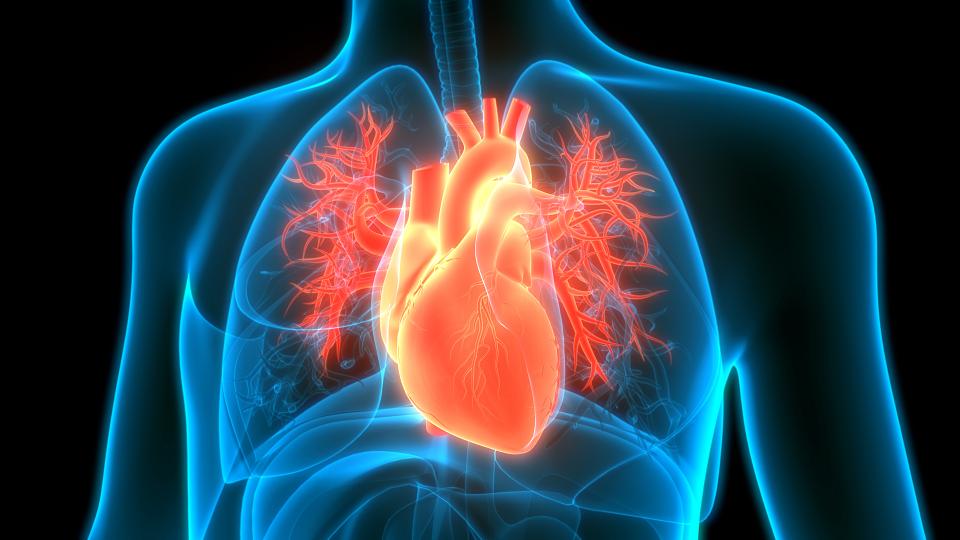What Is Marfan Syndrome?
Marfan syndrome is a genetic condition. It occurs because of a mutation (change) in one of your genes that develops before you’re born. It’s a type of connective tissue disorder, meaning it affects the structures (connective tissues) that hold different parts of the body together. It can affect many different organs and tissues throughout your body. Marfan syndrome is uncommon. Experts estimate it affects only about one in every 5,000 people.
Your symptoms will vary depending on the type of gene mutation you have. But in general, Marfan syndrome often affects the following body parts:
-
Blood vessels
-
Bones
-
Eyes
-
Heart
-
Lungs
-
Skin
What Causes Marfan Syndrome?
A mutation in the fibrillin-1 (FBN1) gene causes Marfan syndrome. The FBN1 gene helps provide your connective tissues with strength and flexibility.
How Does Marfan Syndrome Affect the Heart?
People with Marfan syndrome may have a higher risk of these heart problems:
-
Aortic aneurysms are bulges in the wall of your body’s largest blood vessel (aorta).
-
Mitral valve prolapse happens when the valve (gate) between your heart’s upper and lower left heart chambers (ventricles) doesn’t close properly.
Marfan Syndrome Heart Symptoms
Many people with Marfan syndrome who have heart problems experience no symptoms. If you have mitral valve prolapse, your specialist may notice a heart murmur when they listen to your chest with a stethoscope. This may lead to a mitral valve prolapse diagnosis before you ever experience symptoms.
If mitral valve prolapse progresses without treatment, you may experience these symptoms:
-
Fatigue
-
Swelling in your feet, ankles, and legs
People with an aortic aneurysm don’t have any symptoms. You typically won’t know you have an aortic aneurysm unless your specialist notices the aneurysm during imaging for something else.
Marfan Syndrome Features
People with Marfan syndrome are usually very tall and thin. They often will also have unusually long limbs, fingers, and toes.
How Is Marfan Syndrome Inherited?
You inherit Marfan syndrome through an autosomal dominant pattern. This means just one parent needs to have the gene mutation for a child to inherit the syndrome. If you have Marfan syndrome, you have a 50% chance of passing the syndrome to your child.
Marfan Syndrome Genetic Testing
You should receive genetic testing for Marfan syndrome if someone in your family has the condition. Genetic screening of all your family members is an important part of Marfan syndrome treatment. Detecting and diagnosing the condition early can lead to earlier detection of potential complications and better long-term management.
When Does Marfan Syndrome Appear?
It’s more common to notice symptoms of Marfan syndrome in teens and adults. Parents with a known history of Marfan syndrome may choose to have their children screened for the condition at an earlier age. But it’s not one of the conditions that specialists screen for routinely in all infants.
Marfan Syndrome Testing and Diagnosis
Diagnosing Marfan syndrome involves a blood test for an FBN1 gene mutation. Some people get this blood test because they have a known family history of Marfan syndrome. Others get it when their specialist notices signs of Marfan syndrome, such as a heart murmur or vision changes.
Find an Aortic Disease Surgeon
Marfan Syndrome Treatment
Marfan syndrome treatment varies widely depending on what symptoms you have. If you have mild symptoms, you won’t need any treatment other than routine screenings to check for complications:
-
Eye problems, including early onset glaucoma or cataracts, retinal tears, or lens dislocation
-
Heart problems, including aortic aneurysm and mitral valve prolapse
-
Skeletal problems, including scoliosis, back pain, and foot pain
Because of the wide range of Marfan syndrome symptoms, your care involves a diverse team of specialists:
-
Genetic counselors
Screening with all of these specialists will help ensure that you find complications of Marfan syndrome early. In addition, you may need imaging:
Aortic Dissection in Marfan Syndrome
An aortic dissection is a complication of an aortic aneurysm. It occurs when a small tear in your aorta causes blood to leak between your aortic wall's inner and outer layers. If the tear bursts, it can cause life-threatening bleeding.
The size of the aortic aneurysm affects your risk of aortic dissection. Your cardiologist will monitor you to evaluate your risk of aortic dissection. They may perform procedures to repair the aortic aneurysm if your dissection risk is high.
Marfan Syndrome Life Expectancy
Marfan syndrome can lead to a shorter lifespan. Treatment with a multispecialty team of experts can significantly improve your life expectancy. Your treatment team will help you understand how your symptoms and the potential complications of Marfan syndrome could affect your lifespan.
Why Choose University of Utah Health?
At U of U Health, you have access to an entire team of specialists who collaborates on your care. We treat patients from birth through adulthood, working together to determine the most effective management plan. Our team meets regularly to discuss the best care options for each patient. You may see multiple specialists during one clinic visit, if needed.
Our physicians are involved in national and international groups to study Marfan syndrome and other genetic diseases. We research and stay up to date on the latest treatments, continually offering you the newest, most effective therapies.
Schedule an Appointment
Adult congenital heart disease specialists manage patients with Marfan syndrome affecting their hearts. Call 801-585-7676 to schedule an appointment with the adult congenital heart disease team. Referrals aren’t required, but you may want to check if your insurance requires one.
Virtual Visits
Our specialists are available to meet virtually with you. Feel free to make an appointment with us.
Meet Our Patients
Clinical Trials for Aortic Disease
TREO Clinical Study
The purpose of this research is to help determine the long-term performance of the TREO Abdominal Stent-Graft as a treatment for patients with AAA.
This study is no longer enrolling but is ongoing.
Additional Clinical Trials
The Aortic Disease Program has additional clinical trials in progress:
- GREAT: Global Registry for Endovascular Aortic Treatment
- stAAABle: Nectero EAST System Clinical Study (currently recruiting)






